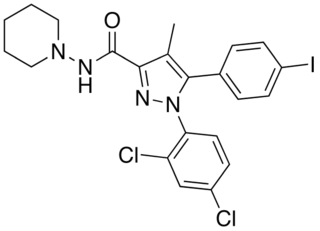
Geckos are small, mostly carnivorous lizards that have a wide distribution, found on every continent except Antarctica. Belonging to the infraorder Gekkota, geckos are found in warm climates throughout the world. They range from 1.6 to 60 centimetres.
The ACM A. M. Turing Award is an annual prize given by the Association for Computing Machinery (ACM) for contributions of lasting and major technical importance to computer science. It is generally recognized as the highest distinction in computer science and is colloquially known as or often referred to as the "Nobel Prize of Computing".
AM General is an American heavy vehicle and contract automotive manufacturer based in South Bend, Indiana. It is best known for the civilian Hummer and the military Humvee that are assembled in Mishawaka, Indiana. For a relatively brief period, 1974–1979, the company also manufactured transit buses, making more than 5,400 of them.
The 12-hour clock is a time convention in which the 24 hours of the day are divided into two periods: a.m. and p.m.. Each period consists of 12 hours numbered: 12, 1, 2, 3, 4, 5, 6, 7, 8, 9, 10 and 11. The 12-hour clock was developed from the second millennium BC and reached its modern form in the 16th century.

Aragatsotn is a province (marz) of Armenia. It is located in the western part of the country. The capital and largest city of the province is the town of Ashtarak. The Statistical Committee of Armenia reported its population was 132,925 in the 2011 census.

Robert Arthur Morton Stern, is a New York City–based architect, educator, and author. He is the founding partner of the architecture firm, Robert A. M. Stern Architects, also known as RAMSA. From 1998 to 2016, he was the Dean of the Yale School of Architecture.

Zell am See is the administrative capital of the Zell am See District in the Austrian state of Salzburg. Located in the Kitzbühel Alps, the town is an important tourist destination due to its ski resorts and shoreline on Lake Zell. While Zell am See has been a favored winter and summer resort for the European aristocracy since the 19th century, it is known as a hub of the international jet set today.

Anil Manibhai Naik is an Indian industrialist, philanthropist and the Chairman Emeritus of Larsen & Toubro Limited, an Indian engineering conglomerate, and a former Chairman of the National Skill Development Corporation.

AM-251 is an inverse agonist at the CB1 cannabinoid receptor. AM-251 is structurally very close to rimonabant; both are biarylpyrazole cannabinoid receptor antagonists. In AM-251, the p-chloro group attached to the phenyl substituent at C-5 of the pyrazole ring is replaced with a p-iodo group. The resulting compound exhibits slightly better binding affinity for the CB1 receptor (with a Ki value of 7.5 nM) than rimonabant, which has a Ki value of 11.5 nM, AM-251 is, however, about two-fold more selective for the CB1 receptor when compared to rimonabant. Like rimonabant, it is additionally a μ-opioid receptor antagonist that attenuates analgesic effects.
The Briz-K, Briz-KM and Briz-M are Russian liquid-propellant rocket orbit insertion upper stages manufactured by Khrunichev State Research and Production Space Center and used on the Proton-M and Angara A5. The upper stages were also used on Rokot, one of Russia's smaller launchers, before its retirement in 2019.
WSGW is a commercial AM radio station in Saginaw, Michigan, owned by Alpha Media. It simulcasts a news-talk radio format with sister station 100.5 WSGW-FM. The two stations identify themselves as "100.5 and 790 Newsradio WSGW." The studios are on Tittabawassee Road.
The RAR-related orphan receptors (RORs) are members of the nuclear receptor family of intracellular transcription factors. There are three forms of ROR, ROR-α, -β, and -γ and each is encoded by a separate gene, RORA, RORB, and RORC respectively. The RORs are somewhat unusual in that they appear to bind as monomers to hormone response elements as opposed to the majority of other nuclear receptors which bind as dimers. They bind to DNA elements called ROR response elements (RORE).

Kristen Mary Jenner is an American media personality, socialite, and businesswoman. She rose to fame starring in the reality television series Keeping Up with the Kardashians (2007–2021) with her family. The success of their show led her and her family to star in multiple spin-off series, including Kourtney and Khloe Take Miami (2009), Kourtney and Kim Take New York (2011), Khloe & Lamar (2011), Rob & Chyna (2016) and Life of Kylie (2017). She acted as executive producer for most of her family's reality programs. In 2013, she hosted a six week long pop culture-driven daytime talk show, called Kris. Following her family's decision to sign off from E! in 2021, they then went on to star in The Kardashians on Hulu from 2022.

The Engan, or more precisely Enga – Southern Highland, languages are a small family of Papuan languages of the highlands of Papua New Guinea. The two branches of the family are rather distantly related, but were connected by Franklin and Voorhoeve (1973).

The Agaricostilbomycetes are a class of fungi in the subdivision Pucciniomycotina of the Basidiomycota. The class consists of a single order, six families, and 15 genera. Most species are known only from their yeast states. Where known, basidiocarps (fruitbodies) are typically small and stilboid (pin-shaped).

AM-2201 is a recreational designer drug that acts as a potent but nonselective full agonist for the cannabinoid receptor. It is part of the AM series of cannabinoids discovered by Alexandros Makriyannis at Northeastern University.

AM-2233 is a drug that acts as a highly potent full agonist for the cannabinoid receptors, with a Ki of 1.8 nM at CB1 and 2.2 nM at CB2 as the active (R) enantiomer. It was developed as a selective radioligand for the cannabinoid receptors and has been used as its 131I derivative for mapping the distribution of the CB1 receptor in the brain. AM-2233 was found to fully substitute for THC in rats, with a potency lower than that of JWH-018 but higher than WIN 55,212-2.

APINACA (AKB48, N-(1-adamantyl)-1-pentyl-1H-indazole-3-carboxamide) is a drug that acts as a reasonably potent agonist for the cannabinoid receptors. It is a full agonist at CB1 with an EC50 of 142 nM and Ki of 3.24 nM (compared to the Ki of Δ9-THC at 28.35 nM and JWH-018 at 9.62 nM), while at CB2 it acts as a partial agonist with an EC50 of 141 nM and Ki of 1.68 nM (compared to the Ki of Δ9-THC at 37.82 nM and JWH-018 at 8.55 nM). Its pharmacological characterization has also been reported in a discontinued patent application. It had never previously been reported in the scientific or patent literature, and was first identified by laboratories in Japan in March 2012 as an ingredient in synthetic cannabis smoking blends, along with a related compound APICA. Structurally, it closely resembles cannabinoid compounds from a University of Connecticut patent, but with a simple pentyl chain on the indazole 1-position, and APINACA falls within the claims of this patent despite not being disclosed as an example.

APICA is an indole based drug that acts as a potent agonist for the cannabinoid receptors.

STS-135 (N-(adamantan-1-yl)-1-(5-fluoropentyl)-1H-indole-3-carboxamide, also called 5F-APICA) is a designer drug offered by online vendors as a cannabimimetic agent. The structure of STS-135 appears to use an understanding of structure-activity relationships within the indole class of cannabimimetics, although its design origins are unclear. STS-135 is the terminally-fluorinated analogue of SDB-001, just as AM-2201 is the terminally-fluorinated analogue of JWH-018, and XLR-11 is the terminally-fluorinated analogue of UR-144. STS-135 acts a potent cannabinoid receptor agonist in vitro, with an EC50 of 51 nM for human CB2 receptors, and 13 nM for human CB1 receptors. STS-135 produces bradycardia and hypothermia in rats at doses of 1–10 mg/kg, suggesting cannabinoid-like activity.













